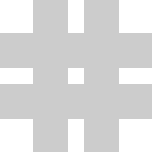
About the Octothorp (#)

The Octothorp Press takes its name and logo from the printer's traditional name for a very common mark, the #. You probably know this glyph by one of its other names: the number, numeral, or pound sign — or (if you're a developer) the hash.
The word "octothorp" is so obscure that isn't even in the Oxford English Dictionary (first or second editions). Here's how the typographic stylist and philosopher Robert Bringhurst defines "octothorp" in his brilliant Elements of Typographic Style (p. 282):
Otherwise known as the numeral sign. It has also been used as a symbol for the pound avoirdupois, but this usage is now archaic. In cartography, it is also a symbol for village: eight fields around a central square, and this is the source of its name. Octothorp means eight fields.
This kind of etymology usually raises red flags of suspicion — and rightly so. But we can testify that we've seen the octothorp on maps used in exactly the way Bringhurst says. (We'll try to add an image here showing this, when we can.)
The octothorp is a fitting symbol for this Press because of its multi-layered history and meaning. On the one hand, it's a venerable mark with a name derived from Old English. But it smacks of modern technology in its association with the telephone (one medium of communication the Octothorp Press doesn't deal in explicitly, by the way).
Indeed, even though we traffic in words, we publish almost entirely digitally (online or by digital typesetting and printing, with only occasional forays into true ink or mixed media), so the numeral sign hints at the underlying ones and zeroes that make all this happen.
Texts are like textiles, woven lines that grip each other (and us) as they cross and twist, and the octothorp looks like four strands of warp and woof. But it also resembles a table of data, and so suggests another of the Press's passions: data graphics in the tradition of Edward Tufte. (See our Recommendations for more along these lines.)
That's how the Octothorp Press gets its name. #
The octothorp glyph that became the basis for the Press's logo comes from Font Diner's face "Dry Cleaners."